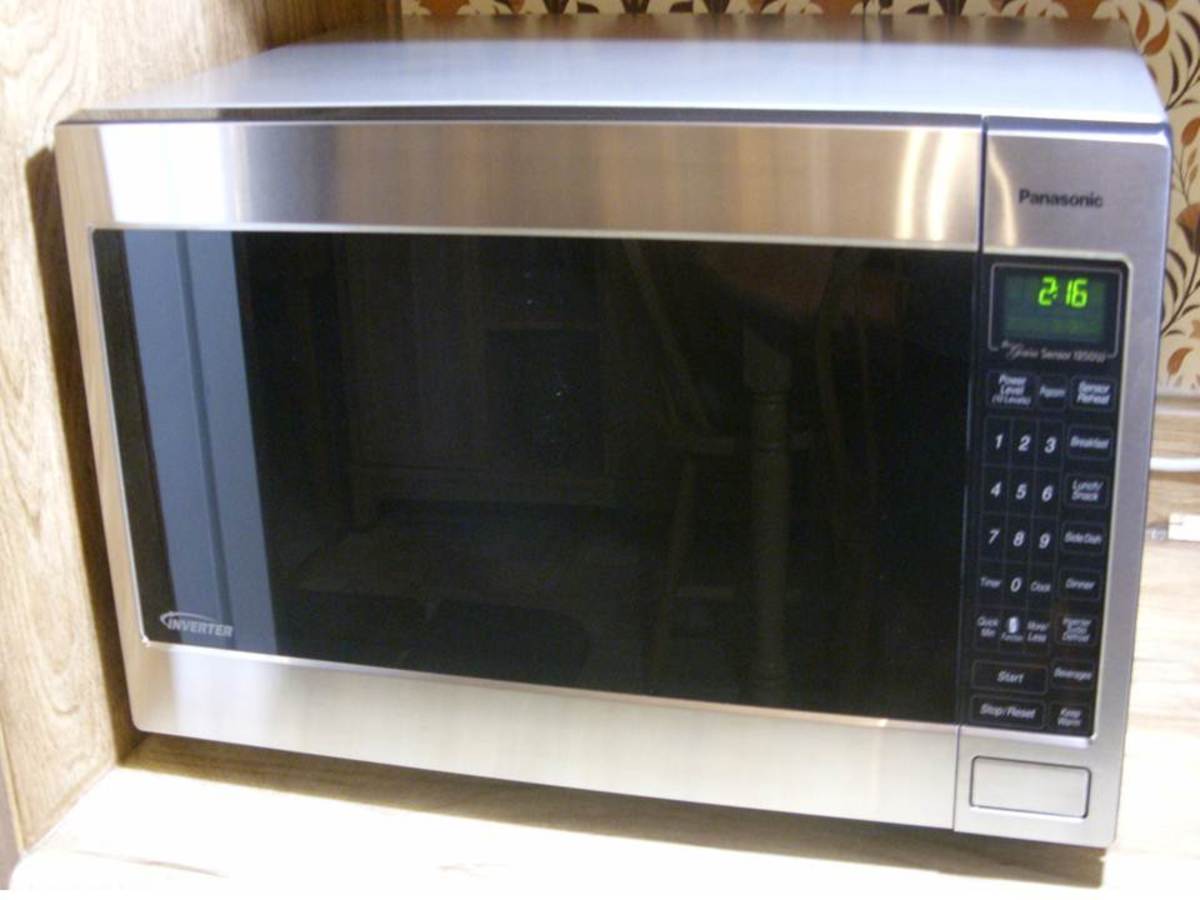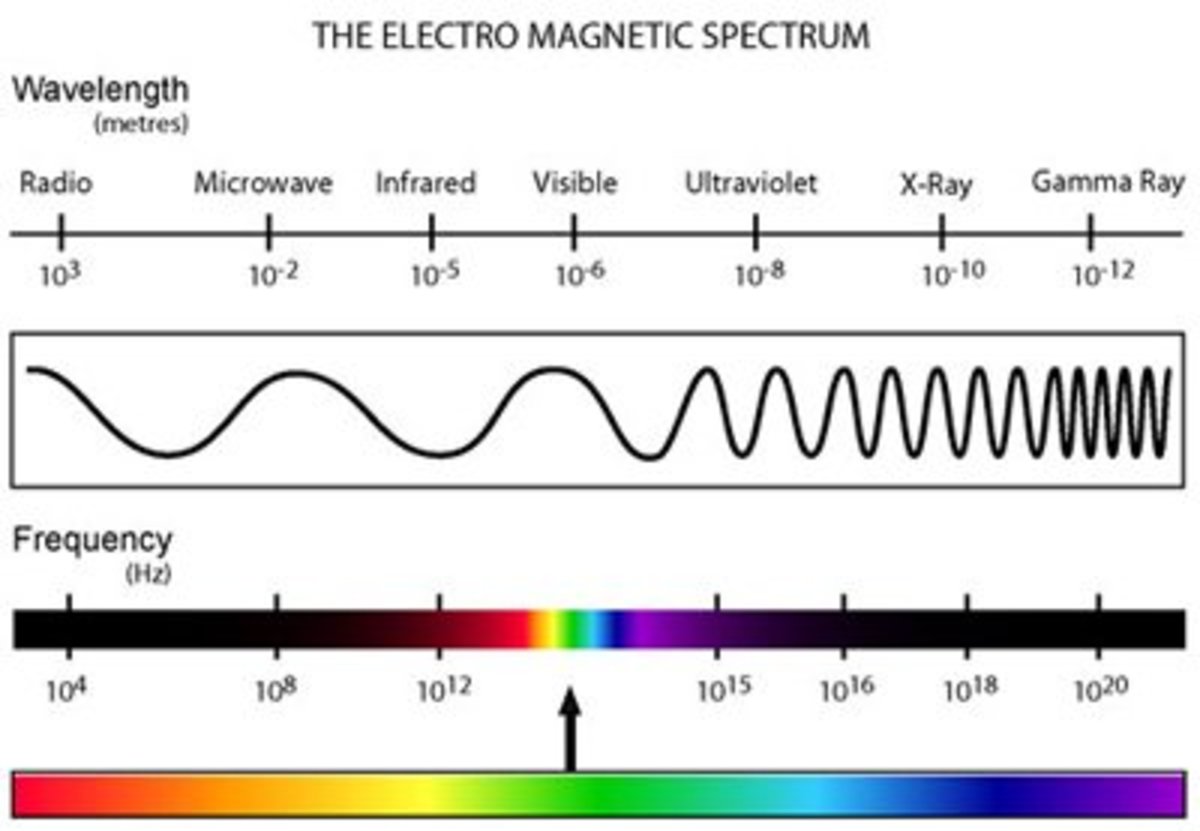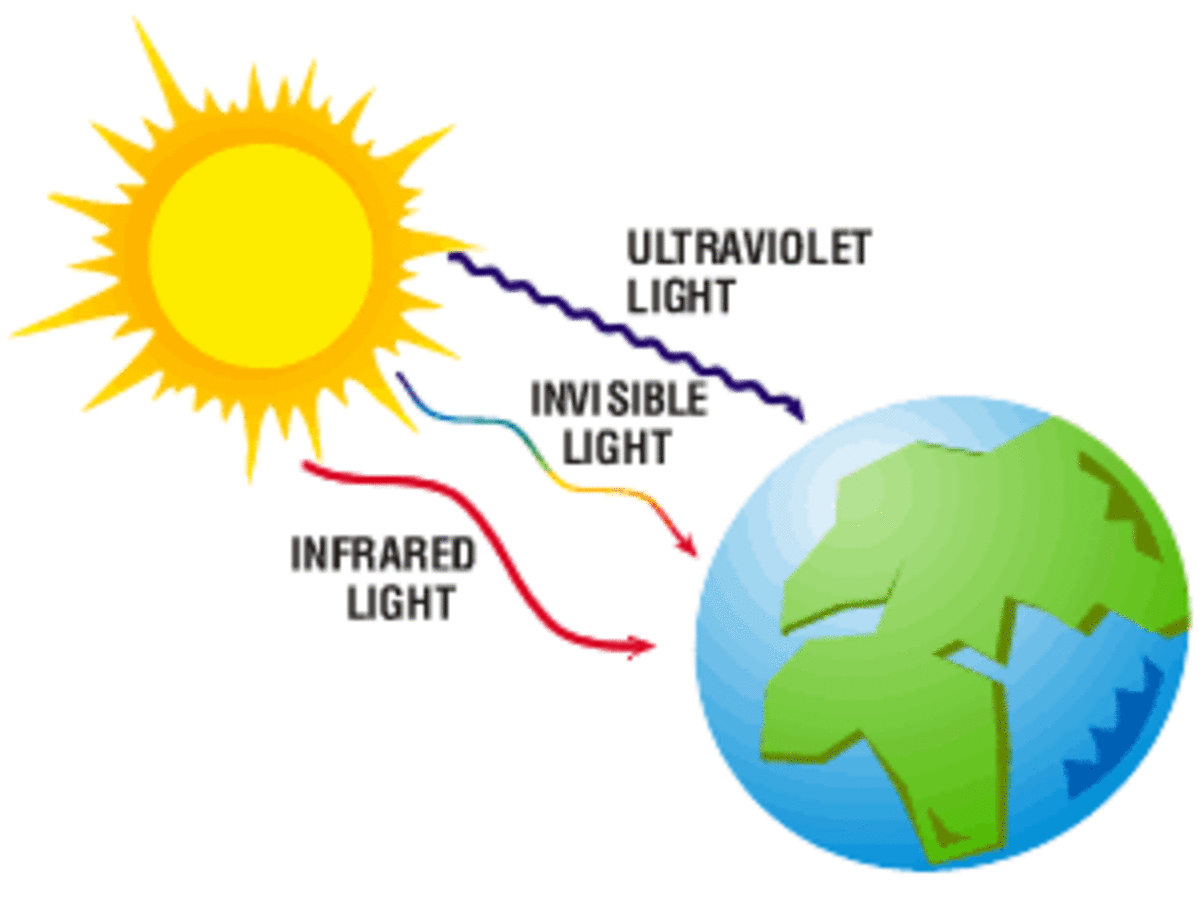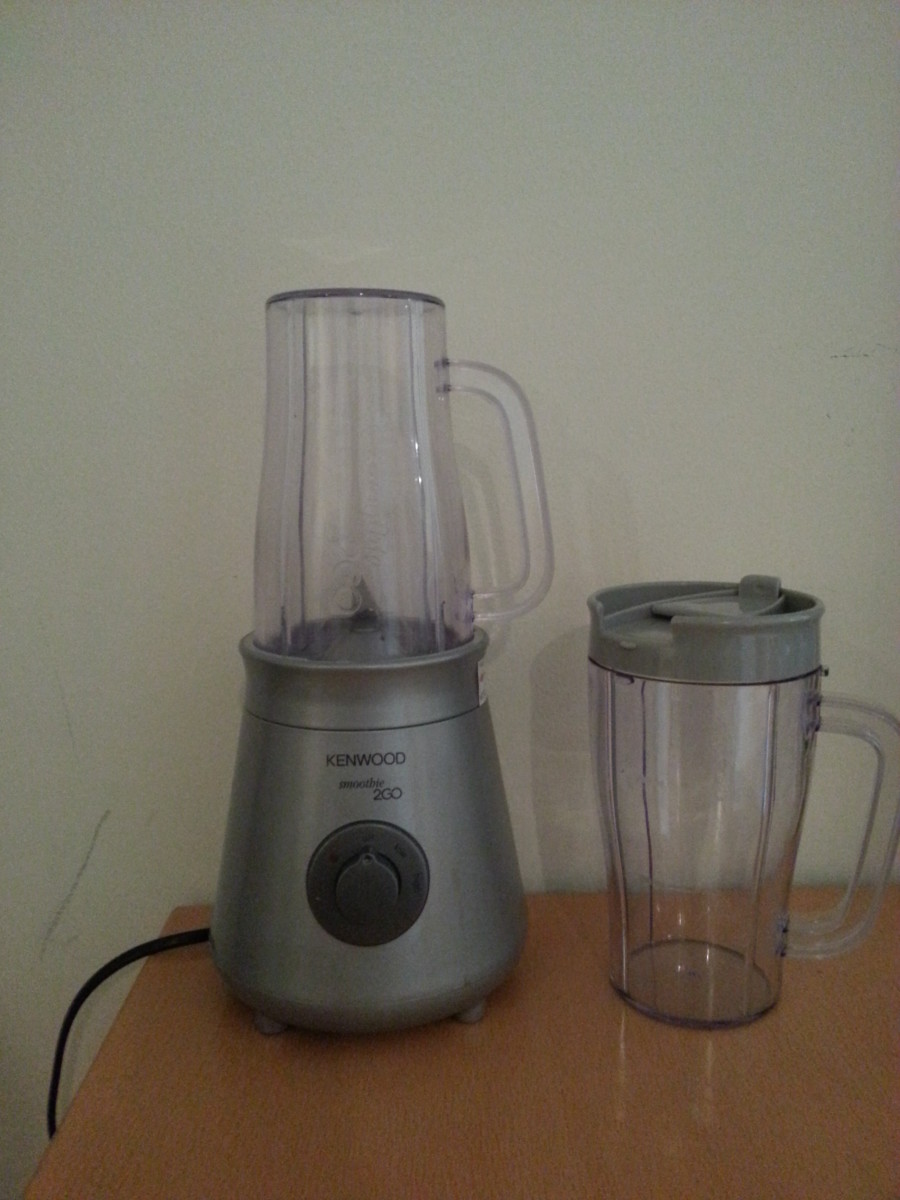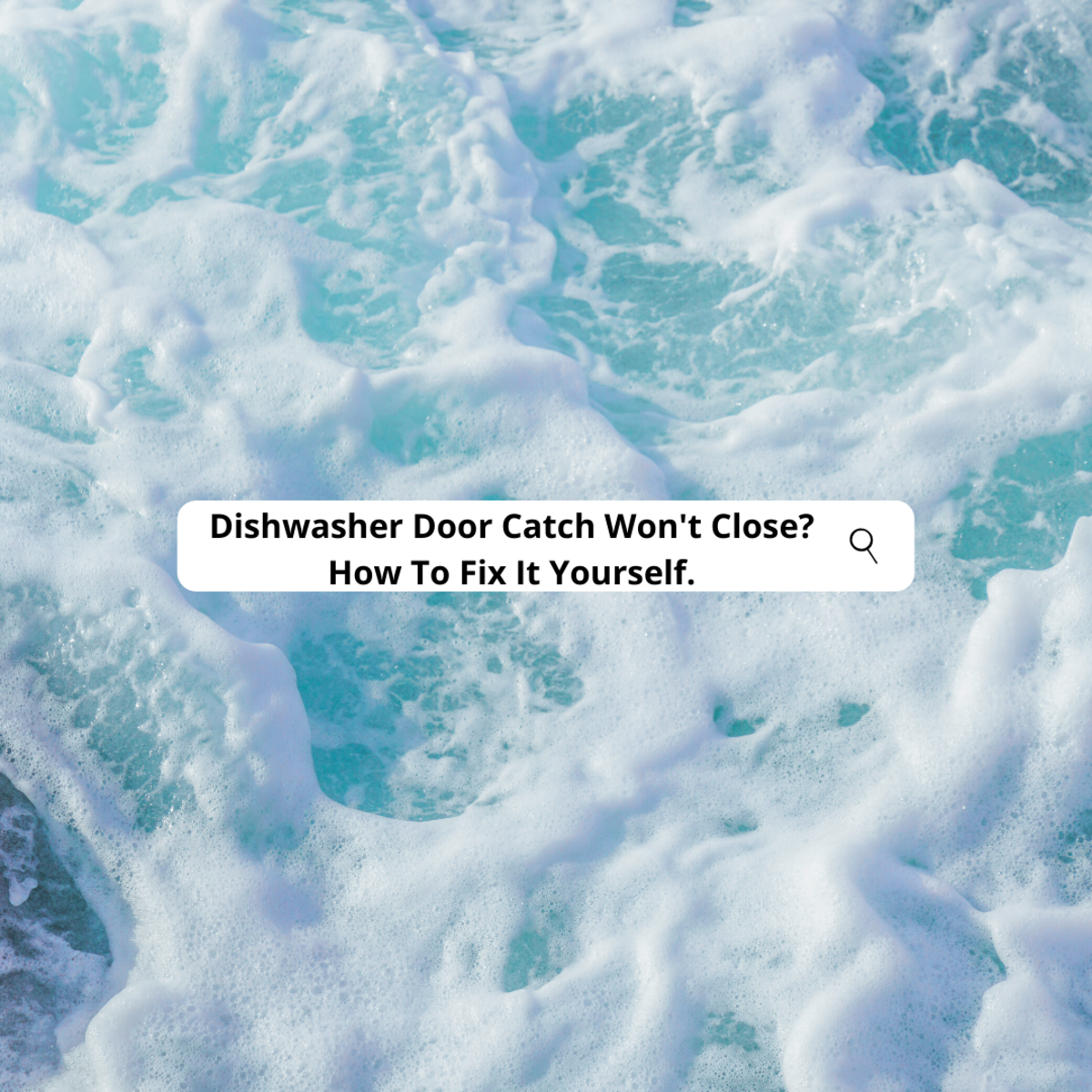- HubPages»
- Home and Garden»
- Kitchen»
- Kitchen Electronics
Why Food Cooked by Microwave Oven Is Safe to Eat
The microwave oven cooks faster; preserves vitamins and antioxidants
Heat in the microwave oven does not come from burning of fuel (or oxidation) but from electrons moving in waves. Food absorbs microwaves and converts them to heat energy. This oven cooks faster and does not harm the human body.
A Hubber gives pieces of advice against the use of microwave oven in cooking food and exposure of the human body to it. What are the pertinent facts?
In the first place, microwaves are separated from X-rays that adversely affect the human body. The positions of electromagnetic waves in the electromagnetic spectrum, from the shortest to the longest, are as follows: (1) galactic cosmic waves, (2) gamma rays, (3) X-rays, (4) ultraviolet light, (5) visible light, (6) infrared light, (7) microwaves and radar, (8) TV and FM radio, (9) shortwave radio, (10) AM radio, (11) aircraft and shipping bands (Goldsmith, M., Dr. Guglielmo Marconi. 2003:5). The shortest wavelength has the highest energy, the longest has the lowest energy.
New entries as of May 6,2012
The frequency of visible light is 1015; that of microwave is 1010 that of ultraviolet is 1016; that of X-rays is 1018; that of gamma rays is 1020Hz (Hertz, named after Heinrich Hertz, the highest in energy level (Reiter, R. and J. Robinson. Melatonin. 1995:170). The EMF (electromagnetic force) of microwave oven: 4 inches, 200-600 milligausss; 1 ft, 40-90 milligauss; 3 ft, 3-5 milligauss. The microwaves are confined within the oven; the EMF radiate into the room (same source as above, page 178). EMF may oscillate electrons and may trigger cancer. Flourescent bulb may emit EMF at 4 inches, 12-40 milligausss; 1 ft, 2-5 milligausss, 3 ft, 7 milligauss.1010 is 10,000,000,000; 1015 is 1,000,000,000,000,000 Hz . Fluorescent bulb at 4 ft above head may be safe. End of new entries
In the human body
Ultraviolet rays, number 4 in the spectrum, are known to excite electrons of molecular oxygen (two atoms of oxygen with two unpaired electrons orbiting in parallel directions). Such excitation reverses the spin of one unpaired electron and the molecular oxygen changes into singlet oxygen (Prasad. Heavy Metal Stress in Plants. 1999:103). Now the two unpaired electrons spin in opposite directions. Singlet oxygen is a free radical. Some people consider it as a reactive oxygen species or ROS that acts like a free radical does. It is much more dangerous than molecular oxygen because it can grab two electrons from the molecule of a tissue at the same time owing to the opposite directions of the spin of unpaired electrons. Molecular oxygen can only grab one electron at a time owing to the parallel spin of its unpaired electrons. Grabbing of electrons results in disease.
X-rays are known to excite the electrons in the inner orbitals of an atom. For example, phosphorus with two electrons in the first orbital, 8 in the second orbital and 5 electrons in the third orbital. An excited electron in the first or second orbital is ejected from its orbital resulting in the change of identity of the atom (Encyclopedia Britannica 2009). This has an adverse effect on the human body as it can initiate a mutation in the DNA that may result in tumor or cancer. DNA contains phosphorous atoms.
“Microwave ovens and deep-space radio communication systems both use radio waves about 5 inches (13 cm) long” (Goldsmith. 2003, page 30).
(I have a Hub “How X-rays and free radicals in cigarette smoke, not tar, cause cancer and heart disease”).
In the electromagnetic spectrum, the visible light (violet, blue, green, yellow, orange, red or colors of the rainbow), number 5 in the electromagnetic spectrum, is much shorter than that of microwaves and radar, number 7 in the spectrum. In between them is infrared light, number 6 in the spectrum. With some exceptions, exposure to visible light is not hazardous. The less so is exposure to microwaves and radar that have less energy than visible light. Exposure to shorter wavelengths like X-rays and ultraviolet light are known to be hazardous to the human body.
Microwaves can "penetrate about two inches, so , if the food mass is not too thick, it will heat relatively uniformly" (Paul, P. “Meat.” Food Theory and Applications. 1972:335-494)
As for one exception: heat from the sun in the amount of at least 1216 kcal/mol can move an electron from its orbital (Brown et al. Chemistry the Central Science. 7th ed. 1997). Energy less than 1216kcal/mol can oscillate electron but not move it out of its orbital. When that heat strikes the water in the skin it will trigger a reaction that results in hydroxyl radical, the most destructive free radical (Sharma, H. MD. Freedom from Disease. 1993).
The reaction is as follows: Heat hits water in the skin and forms H2O+. H2O+ reacts reversibly with H2O results in H3O (hydronium) + OH. (with a dot as superscript) which is the hydroxyl radical.
Hydroxyl radical is different from hydroxyl which comes from the dissociation of water into ions of H+ and OH- (hydroxyl) that make for the acidity of a solution. Hydroxyl radical can trigger melanoma (cancer of the skin) and motor neuron disease, among others.
I have a Hub "How to Prevent and Treat Motor Neuron Disease (MND) Also Called Amyotrophic Lateral Sclerosis (ALS) where the formation of hydroxyl radical is also explained.
In food
“Meanwhile, the microwaves that so fascinated Marconi in later life are now used to defrost and cook food far more quickly than conventional ovens” (Goldsmith. 2003, page 43).
[Unfortunately, Marconi, inventor of radio, radar, and wireless, died of heart attack at a young age, 63. His heart attack was triggered most likely by ozone that his devices created. Electrical sparks create ozone out of molecular oxygen; ozone is a free radical.]
“Cooking times for 1 pound of fresh broccoli to achieve optimum tenderness in the stems was 6 minutes by microwave and 13 minutes by boiling” (Charley, H. “Fruits and Vegetables.” Food Theory and Applications. 1972:251-334).
“Studies on cooking meat in a microwave oven indicate that while the cooking time is much shorter than in a conventional oven, the cooking losses are greater, principally due to greater evaporation losses….” (Paul, P. “Meat.” Food Theory and Applications. 1972:335-494). Loss is different from harm done on food or inflicted on the human body. The loss is in terms of appearance, tenderness, juiciness, and flavor.
“…. All animal protein foods containing preformed cholesterol, including most meats, many types of shellfish, poultry and seafood” when " ... fresh baked, poached steamed, or microwave cooked with all visible fat removed, these are high quality foods; fried they become toxic” (Cranton, E. MD. Bypassing Bypass. Updated second edition.1995:183).
“As for the microwave oven, contrary to what many alarmists have feared, it is your best protection against diet-related free radical damage, since it preserves antioxidants far better than many conventional cooking methods.
“…Natural fats are not excessively oxidized; few polynuclear hydrocarbons or other dangerous residues are formed; the vitamin content of foods is well preserved” (Cranton, E. MD. Bypassing Bypass. Updated second edition. 1995:194).
To get the browning effect of conventional oven, thus enhance appearance of meat cooked by microwave oven, infrared rays are applied.


